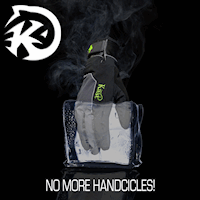I personally like the Rapala in either an 8" or 10" blade. They hold an edge pretty well, fileted 12 salmon before I had to touch it up. I use a steel and a diamond dust stone to get them in shape before a trip, and then maintain them with a small v-shaped ceramic sharpener that I keep on the boat like Norman described. I also have a folding filet knife, maybe a Kershaw?, but I rarely use it, weak blade.
The primary features on a filet knife that I look for are strength and flexibility of the blade, and the ability of the blade to hold an edge. I worked in restauraunts for 10 years, so I got pretty good at recognizing good steel, and making it stay sharp.
Dull knives are more dangerous than sharp ones because they make you put more pressure on the blade. This increases the chances of a slip. Let the blade slice with light pressure. Do not just push it through the fish like you would cut a block of cheese, slice by moving the blade in a steady motion.
Parker, I was taught to filet by a chef in Seattle. We got our fish in whole, and prepared them in the restaurant, so Bruce (chef) showed me the way. I plan on being at the Flotilla, so ask me to show you, and I will. This is not the charter boat method where you leave a bunch of bones in the rib cage. At most you will leave an ounce or so in the bones, and it will look like the nice filets you see in the store, (the ones I won't buy.)
It made me sick to see folks butchering fish and leaving half of the meat on the carcass up at Sekiu last weekend.
Here's something you don't want to hear;
"Well, how is he?"
"Not to good, it was clean to the bone!"
I met an old guy, (you know, over 40) at the cleaning table last weekend that cut the tip off of his finger a few years back. Big ouch.
Andy
_________________________
"Give me the anger, fish! Give me the anger!"
They call me POODLE SMOLT!
The Discover Pass is brought to you by your friends at the CCA.














 Previous Topic
Previous Topic Index
Index


